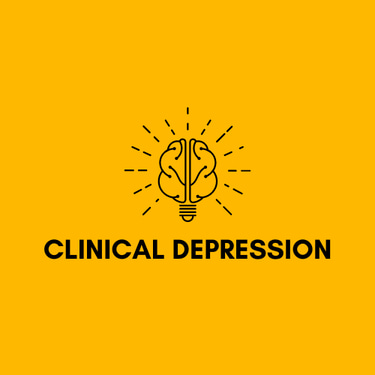For Questions: Text (833)233-0869
Virtual Mental Health Therapy: A Comprehensive Guide to Managing Anxiety and Depression


In an increasingly digital world, virtual mental health therapy has emerged as a vital tool for managing anxiety and depression. As the stigma around mental health continues to diminish, more people are seeking professional help, and many are turning to online platforms to receive the care they need. Virtual mental health therapy offers a flexible, accessible, and often more affordable option for those struggling with mental health issues.
In this article, we will delve into the intricacies of anxiety and depression, explore the benefits of virtual mental health therapy, discuss how to choose the right platform, and provide tips for making the most of your online therapy experience.
Understanding Anxiety and Depression
What is Anxiety?
Anxiety is a natural response to stress or perceived danger. It is characterized by feelings of worry, nervousness, or fear that can be mild or severe. While it’s normal to feel anxious from time to time, chronic anxiety can be debilitating, affecting a person’s ability to function in daily life. Anxiety disorders are the most common mental health disorders in the United States, affecting approximately 40 million adults every year.
Symptoms of Anxiety
Persistent Worry: Constant, excessive worry about various aspects of life, such as work, health, or relationships.
Restlessness: A feeling of being on edge or unable to relax.
Fatigue: Feeling tired even after a full night’s sleep.
Difficulty Concentrating: Trouble focusing or feeling that your mind goes blank.
Irritability: Being easily frustrated or angered.
Sleep Disturbances: Difficulty falling or staying asleep, or having restless, unsatisfying sleep.
Physical Symptoms: Muscle tension, headaches, stomachaches, or dizziness.
What is Depression?
Depression is more than just feeling sad or experiencing a temporary period of low mood. It is a serious mental health condition that affects how a person feels, thinks, and handles daily activities. Depression can interfere with work, school, relationships, and overall quality of life. According to the World Health Organization (WHO), depression is one of the leading causes of disability worldwide.
Symptoms of Depression
Persistent Sadness: A continuous feeling of sadness, emptiness, or hopelessness.
Loss of Interest: A lack of interest or pleasure in activities that were once enjoyable.
Changes in Appetite: Significant weight loss or gain, or a change in appetite.
Sleep Disturbances: Insomnia or oversleeping.
Fatigue: A lack of energy or feeling tired all the time.
Feelings of Worthlessness: Excessive guilt, self-blame, or feelings of worthlessness.
Difficulty Concentrating: Trouble focusing, making decisions, or remembering things.
Physical Symptoms: Unexplained aches and pains, headaches, or digestive problems.
Suicidal Thoughts: Thoughts of death or suicide, or suicide attempts.
The Rise of Virtual Mental Health Therapy
What is Virtual Mental Health Therapy?
Virtual mental health therapy, also known as online therapy or teletherapy, refers to the delivery of mental health services through digital platforms. This can include video conferencing, phone calls, messaging, or chat-based interactions with licensed therapists, counselors, or psychologists. The rise of virtual mental health therapy has been fueled by advancements in technology, the increasing demand for mental health services, and the global COVID-19 pandemic, which forced many to seek alternatives to in-person therapy.
Benefits of Virtual Mental Health Therapy
1. Accessibility
One of the most significant advantages of virtual mental health therapy is its accessibility. People living in remote or rural areas, where mental health services may be limited, can access therapy without the need to travel long distances. Additionally, those with physical disabilities or mobility issues can receive care from the comfort of their own homes.
2. Convenience and Flexibility
Virtual mental health therapy offers unparalleled convenience and flexibility. Sessions can be scheduled at times that work best for the individual, whether early in the morning, late at night, or during a lunch break. This flexibility is especially beneficial for those with busy schedules, parents, or caregivers.
3. Reduced Stigma
For some, the stigma associated with seeking mental health treatment can be a significant barrier to getting help. Virtual therapy provides a level of anonymity and privacy that can make it easier for individuals to seek care without fear of judgment.
4. Cost-Effectiveness
Virtual therapy can be more affordable than traditional in-person therapy. Without the overhead costs associated with maintaining a physical office, many online therapy platforms offer services at lower rates. Additionally, there are no travel expenses, which can further reduce costs.
5. Access to a Wider Range of Therapists
With virtual therapy, geographical boundaries are no longer a limitation. Individuals can choose from a broader range of therapists, including those who specialize in specific issues or therapeutic approaches, regardless of location.
Types of Virtual Mental Health Therapy
1. Cognitive Behavioral Therapy (CBT)
CBT is one of the most widely used therapeutic approaches for treating anxiety and depression. It focuses on identifying and challenging negative thought patterns and behaviors, and replacing them with healthier, more constructive ones. Virtual CBT sessions can be conducted through video conferencing or chat-based platforms.
2. Dialectical Behavior Therapy (DBT)
DBT is a type of cognitive-behavioral therapy that emphasizes the development of coping skills to manage emotions, reduce self-destructive behaviors, and improve relationships. DBT is often used to treat borderline personality disorder, but it can also be effective for anxiety and depression. Virtual DBT sessions typically involve a combination of individual therapy and group skills training.
3. Psychodynamic Therapy
Psychodynamic therapy focuses on exploring unconscious thoughts and feelings that may be influencing current behaviors and emotions. This type of therapy aims to help individuals gain insight into their past experiences and how they shape their present life. Virtual psychodynamic therapy sessions are typically conducted via video conferencing.
4. Mindfulness-Based Therapy
Mindfulness-based therapy incorporates mindfulness practices, such as meditation and deep breathing, to help individuals stay present and manage symptoms of anxiety and depression. This therapeutic approach is often delivered through online platforms, with therapists guiding clients through mindfulness exercises.
5. Support Groups
Virtual support groups offer a space for individuals with similar experiences to connect, share, and provide mutual support. These groups can be facilitated by a licensed therapist or peer-led. Participating in a support group can help reduce feelings of isolation and provide a sense of community.
How to Choose the Right Virtual Mental Health Therapy Platform
1. Identify Your Needs
Before choosing a virtual therapy platform, it’s essential to identify your specific needs. Are you looking for individual therapy, couples therapy, or group therapy? Do you need a therapist who specializes in treating anxiety, depression, or another specific issue? Understanding your needs will help you narrow down your options.
2. Check Credentials
Ensure that the therapists on the platform are licensed and have the appropriate credentials to provide mental health services. Look for platforms that screen their therapists and provide information about their qualifications and areas of expertise.
3. Consider the Type of Therapy
Different platforms may offer different types of therapy, such as CBT, DBT, or psychodynamic therapy. Choose a platform that offers the therapeutic approach that aligns with your preferences and needs.
4. Review Privacy and Security Measures
Privacy and security are critical when it comes to virtual mental health therapy. Ensure that the platform uses secure, encrypted communication channels to protect your personal information. Review the platform’s privacy policy to understand how your data is stored and used.
5. Evaluate the User Experience
The platform should be user-friendly and easy to navigate. Consider factors such as ease of scheduling, communication options, and availability of customer support. Reading reviews and testimonials can provide insight into the user experience.
6. Cost and Insurance Coverage
Cost is an important consideration when choosing a virtual therapy platform. Some platforms offer subscription-based pricing, while others charge per session. Check if the platform accepts insurance or offers financial assistance programs to make therapy more affordable.
Tips for Making the Most of Virtual Mental Health Therapy
1. Create a Private Space
To get the most out of your virtual therapy sessions, create a private, comfortable space where you won’t be interrupted. This will help you focus and engage fully in the session.
2. Be Honest and Open
Honesty is key to effective therapy. Be open with your therapist about your thoughts, feelings, and concerns. The more transparent you are, the better your therapist can support you.
3. Set Goals
Work with your therapist to set specific, achievable goals for your therapy. Having clear goals can help guide your sessions and measure your progress.
4. Practice Self-Care
Therapy is just one aspect of managing anxiety and depression. Incorporate self-care practices, such as regular exercise, healthy eating, and sufficient sleep, into your routine to support your mental health.
5. Stay Consistent
Consistency is crucial for successful therapy. Attend your sessions regularly and engage in any homework or exercises your therapist assigns. Regular participation will help you make steady progress.
Conclusion
Virtual mental health therapy has revolutionized the way individuals access care for anxiety and depression. With its accessibility, convenience, and effectiveness, it offers a valuable alternative to traditional in-person therapy. By understanding the benefits of virtual therapy, choosing the right platform, and actively participating in the process, you can take significant steps toward improving your mental health and overall well-being.
If you or someone you know is struggling with anxiety or depression, consider exploring virtual mental health therapy as a viable option for support and healing.
©2025
Clinical Depression
For Questions: Text
(833) 233-0869
